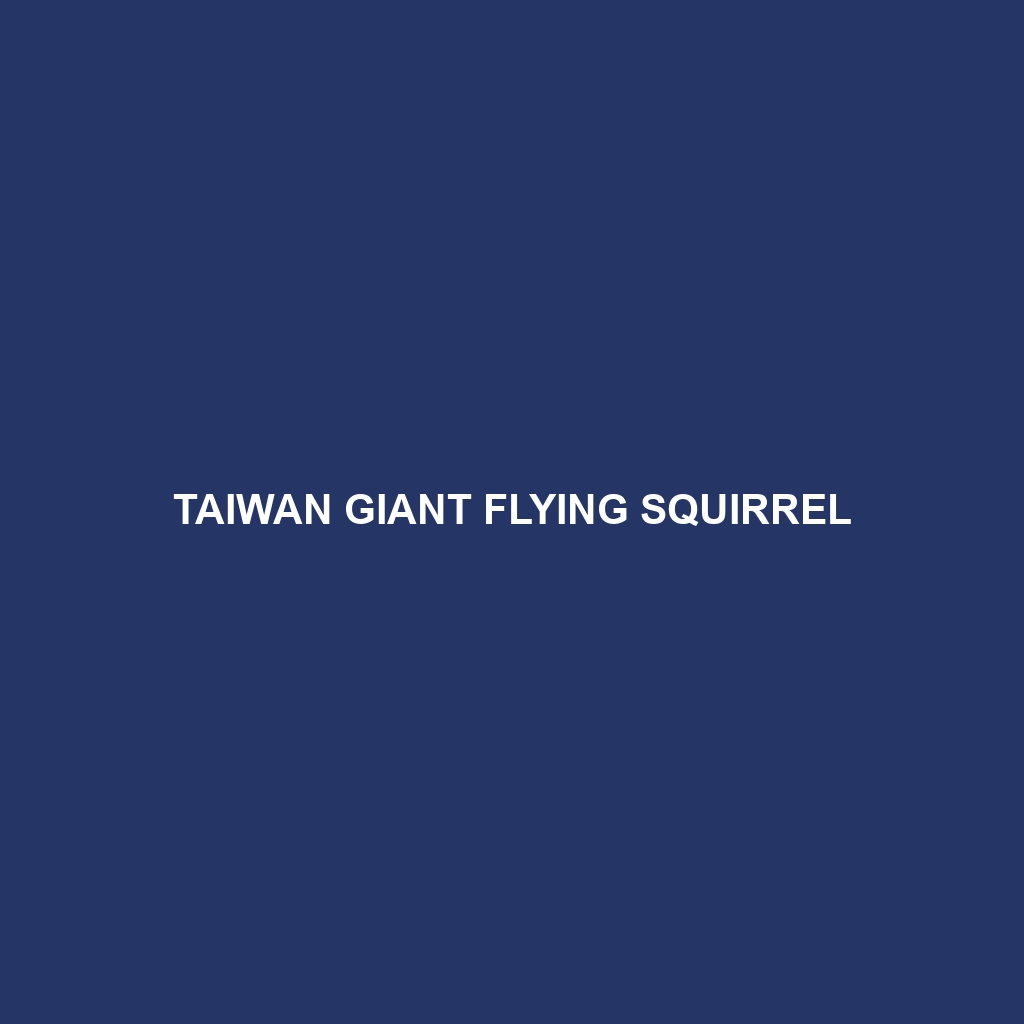Taiwan Giant Flying Squirrel (Scientific Name: )
Habitat
The Taiwan Giant Flying Squirrel is primarily found in Taiwan, particularly in the mountainous regions and lush forests of the island. These creatures prefer dense, mature forests, where they can glide between towering trees. Their habitat is typically characterized by a combination of broadleaf and coniferous trees, which provide ample space for their gliding activities and nesting opportunities.
Physical Characteristics
This remarkable species can reach a size of up to 50 cm (20 inches) in body length, with a bushy tail that adds an additional 40 cm (16 inches). The fur is thick and soft, displaying a greyish-brown color that offers excellent camouflage against the bark of trees. One distinctive feature of the Taiwan Giant Flying Squirrel is its large eyes, adapted for nocturnal vision, and its unique patagium (the membrane that extends from its limbs), which allows it to glide gracefully through the forest.
Behavior
The Taiwan Giant Flying Squirrel is primarily nocturnal, engaging in most of its activities after dark. They are known for their impressive gliding capabilities, which can span distances of up to 100 meters (328 feet). These squirrels are social creatures, often found in small family groups. Their vocalizations include various chirps and whistles, which help maintain communication among members of their group.
Diet
As herbivores, Taiwan Giant Flying Squirrels primarily feed on a diet of leaves, fruits, nuts, and flowers. Their feeding habits are critical for the dispersal of seeds in their ecosystem, as they often remove fruits and nuts from the trees, contributing to forest regeneration.
Reproduction
The breeding season for the Taiwan Giant Flying Squirrel typically occurs in late spring. After a gestation period of approximately 60 days, females give birth to one to three offspring in a nest located high in the trees. The young are born blind and helpless but grow rapidly. Parental care is provided primarily by the mother, who teaches them vital skills, including gliding and foraging.
Conservation Status
The Taiwan Giant Flying Squirrel is currently listed as vulnerable due to habitat loss from deforestation and human encroachment. Conservation efforts are essential to protect their natural habitats and ensure the survival of this remarkable species.
Interesting Facts
- The Taiwan Giant Flying Squirrel is distinct from other flying squirrels due to its larger size and unique coloration.
- They are known to glide from tree to tree in search of food or to escape predators, making them a fascinating species to observe when in the wild.
Role in Ecosystem
The Taiwan Giant Flying Squirrel plays a pivotal role in its ecosystem as a seed disperser, helping maintain the health of the forest. Their feeding habits promote biodiversity, as the seeds they disperse contribute to the growth of new plants and trees. Furthermore, they serve as prey for larger predators, thus being a vital part of the food chain in their natural habitat.
